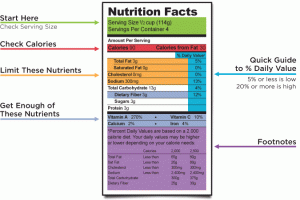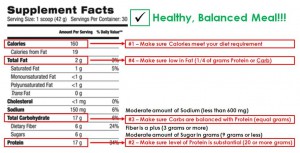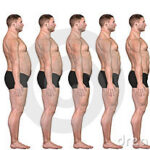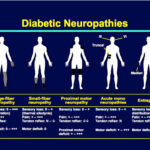Basic steps while reading a nutrition label:
- Look at the serving size and servings per container. The label will describe the values for a serving. So, If one takes twice the serving, the values should be doubled.
- Look at the calories per serving and the calories from fat. If the commodity contains < 40 cals, it is of low calorie, if <100 cals, it is of a moderate calorie, if <400 cals it is of high calories. Too much of calories will lead to obesity.
- Look for the nutrients to limit- total fat, cholesterol and sodium- these are linked to heart disease, high blood pressure and some cancers. While using canned food, rinse off the liquid as it contains a lot of sodium.
- Get enough of dietary fiber, vitamin A, Vitamin C and calcium. Usually on reading carefully, the calcium content in skimmed milk or full fat milk is the same. But, in yoghurts, the calcium will vary. Look for fiber 3 g and more.
- Look for hidden sugars- for example,high fructose corn syrup. Look for substances ending in -ol or –ose. They are sugars. Remember that 5 g of sugar is the same as a level spoonful of sugar.
- The footnote is the same in all labels. This shows the percentage daily values for an average American who is moderately active. He will need 2000 Kcals a day. For a more active American, 25000 Kcals or more may be needed. The values against each of the main nutrients are mentioned. This label will not change with the food.
- Look for % DV ( Daily value) of 20% and above for nutrients that are good and 5% and below for those which are to be limited.
Also remember…..
• The top of the label describes a standard serving size and how many servings a package contains — critical information for interpreting the rest of the numbers on the label.
• A bottle of sweetened ice tea may only have 75 calories per serving. But if that bottle contains two and a half servings and you drink the whole bottle, you’re consuming 225 calories.
• Serving sizes are based on standard measures agreed upon by the USDA and the FDA. One serving of cereal is 3/4 cup, for instance. A single serving of macaroni and cheese is a cup. Most all of the information that follows on the nutrition label is based on that serving size, from calories to grams of fat. So it’s essential to know what a serving is, and to know how much you actually eat.
Phrase Definition ……………and………..What they actually mean
No fat or fat-free Contains less than 0.5 g of fat for each 100 g/ml
Lower or reduced fat Contains at least 25% less fat for each 100 g than original
Low fat Contains less than 3 g fat for each 100 g or 1.5 g for each 100 ml
Low in saturated fat Contains no more than 1.5g for each 100g or 0.75g for each 100ml
Lite or light Contains 25% less kilojoules than the original or comparative product
Sugar free Contains less than ½ g sugar for each 100g
Reduced sugar Contains at least 25% less sugar for each serving than the original product
No added sugar Sugar in any form has not been added as an ingredient
Unsweetened No sugar or sweetener has been added
No preservatives added Contains no added chemicals but may contain natural preservatives
Low sodium Contains less than 120 mg sodium for each 100g
No salt or salt-free Contains 5 mg or less of sodium for each 100g
High fiber Contains between 4.8 g– 6g or more fibre for each 100g
Lean Equal to or less than 10% of total fat
Extra lean Equal to or less than 5% of total fat
Low chole ol Contains 20 mg for each 100g or 10 mg for each 100 ml
• Foods can only be labeled as ‘low in energy’ if it contains no more than 170 kJ for each 100 g of solid food or 80 kJ for each 100 ml of liquids.
• Foods can only be labeled as ‘high in energy’ if it contains 950 kJ for each 100 g of solid food or 250 kJ for each 100 ml of liquids.
• Food labels can no longer appear to be endorsed by a health practitioner (for example medical doctor, dietitian etc), or be associated with testimonials like ‘Mrs X has lost 20 kg by using product Y’.
The use of terms such as ‘healthy’, ‘wholesome’ or ‘nutritious’ is banned.
• Food labels are no longer allowed to state or imply that the product can cure any medical condition.
• Foods that were previously advertised as ‘no sugar added’ or ‘sugar free’ will be banned if the product contains any type of sugar form or derivative such as honey, molasses, sucrose, sugar, fruit juice concentrate, high-fructose corn syrup.
A second phase of regulations is planned and will define food advertising that is targeted at children, the glycemic index and foods that are non-essential for a healthy diet.
Did you Know?
• Fortified, enriched, added, extra and plus actually means that the nutrients such as minerals and fiber have been removed and vitamins have been added while processing. Look for 100% wheat or low sugar cereals.
• Fruit drinks may have little or no real fruit with lots of sugar. Look for 100% fruit juices.
• Natural – may have started with natural ingredients, but while processing will lose the “natural” component.
Food labels are meant for adults and not for children. Please remember that children may need > 2000 Kcals or < 2000 Kcals depending on their level of activity or whether they are boys or girls. Children however will benefit from looking at the calories per serving, the fats per serving, the fibers per serving and make good choices. Most of the children will need food containing more calcium and iron.















